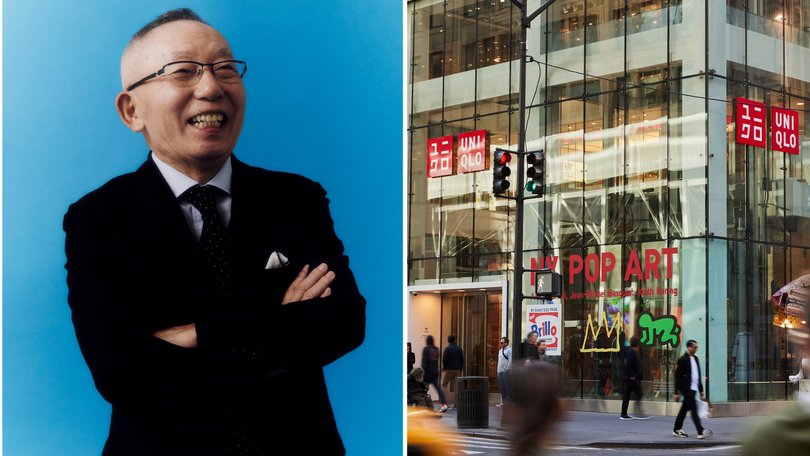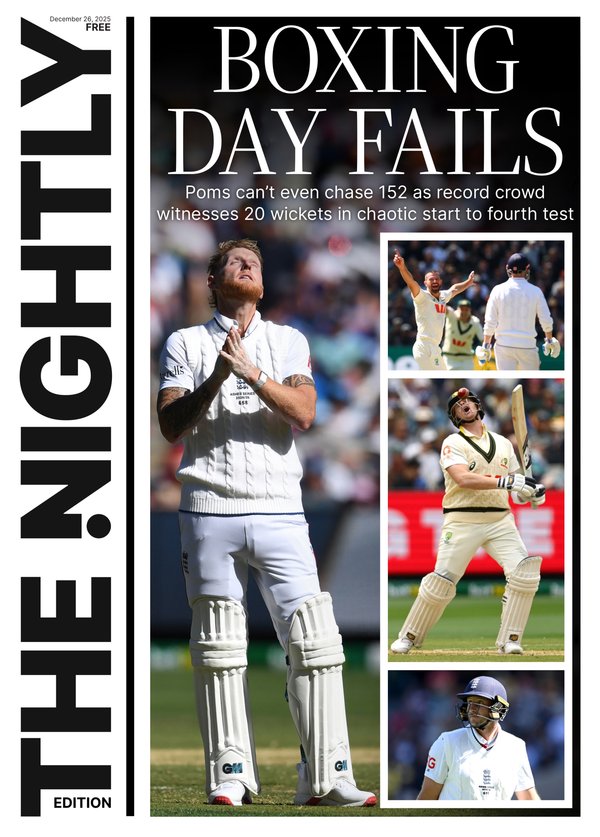THE NEW YORK TIMES: For Uniqlo’s founder Tadashi Yanai, conquering America is personal

For Tadashi Yanai, the founder and president of the Uniqlo parent company Fast Retailing, the United States has become a source of both immense optimism and concern.
In recent years, Uniqlo’s affordable, well-made basic clothes have struck a chord, especially with younger American shoppers, fueling a rapid business expansion. The United States is now a pillar of the growth strategy of Japan’s Fast Retailing.
Yanai, 76, came of age in post-war Japan, steeped in American culture. He wore Converse and drew inspiration for Uniqlo from casual-wear brands like Gap.
Sign up to The Nightly's newsletters.
Get the first look at the digital newspaper, curated daily stories and breaking headlines delivered to your inbox.
By continuing you agree to our Terms and Privacy Policy.Conquering the US market is also a matter of personal legacy for Yanai, whose Uniqlo empire today comprises more than 2,500 stores globally.
“I want to succeed in America,” Yanai said in an interview in a sunlit office in New York’s Meatpacking district. It was the preppy youth styles of the East Coast that opened his eyes to clothing in the 1960s and 1970s, Yanai said. So, he said of the market, “I feel the most attachment to it.”
After opening its first store in New Jersey in 2005, Uniqlo’s North American business didn’t turn profitable until 2022. The market’s expansion since then helped Fast Retailing report a record annual net profit of $2.8 billion last week.
In the United States, “finally, we got to the entrance point,” Yanai said.
Yet Yanai’s optimism is shadowed by his growing alarm over the political and economic direction of the country that played a foundational role in Uniqlo’s identity.
President Donald Trump’s protectionist policies and extraordinarily high tariffs threaten to throw a wrench into Uniqlo’s global supply chain. The company relies on a meticulously managed network of factories in China and Southeast Asia, regions targeted by double-digit tariffs.
In this economic climate, Yanai has positioned himself as a rare Japanese leader in business openly voicing opposition to the US pivot toward isolationism.
“Is it really OK for America to, as it pleases, decide this percentage for this country and this percentage for this country?” he asked. Such moves “will divide global trade and will definitely be a negative for global development,” he added.
“Japanese people often do not openly express their opinions,” Yanai said. “I have objections. America is a country of freedom and democracy, and a friendly country, right? I want to see the return of a healthier America.”
Yanai grew up strongly influenced by American culture. Born in 1949 in a small coal mining town west of Hiroshima where his parents ran a men’s clothing store, he recalls watching 1950s sitcoms like “Father Knows Best” on television.
He wore Van Jacket, an Ivy League-obsessed clothing line that was a sensation among Japanese young men in the early 1960s.
When Yanai took over the family clothing business in 1972, it included one store focused on men’s suits and a second shop selling Van jackets. That Van outlet, he said, laid the roots of Uniqlo: the large-scale potential of affordable casual clothing.
In 1984, Yanai started Unique Clothing Warehouse in Hiroshima, later shortening the name to Uniqlo. The brand grew quickly, expanding to 100 stores across Japan in its first decade.
In the early 2000s, Yanai got an indication his clothes could also be a hit overseas. A team passed out a box of $15 Uniqlo fleece jackets that were popular in Japan to people in New York’s Washington Square Park.
John Jay, then the global creative director of an agency that helped run the fleece campaign in Japan, had the team film parkgoers’ enthusiastic reactions to the garments.
He took the footage back to Japan to show to Yanai, who reacted: “Holy smokes, we have a chance.”
But Uniqlo’s first pushes overseas were difficult. Uniqlo opened its first store outside Japan in 2001 in London. It quickly expanded to 21 outlets in Britain, but by 2003 had shut down 16 of them. A subsequent attempt in the US market, with three stores in suburban New Jersey shopping centers, also faltered.
Yanai described those years as a series of “challenges and failures.” At the time, “no one had any idea what the brand Uniqlo was,” he said.
“There was no way we were going to sell,” he said. “We didn’t even understand those basic things back then.”
Around that time, Yanai hired Yukihiro Katsuta, then a vice president at Bergdorf Goodman in New York. Katsuta recalled that his New York fashion friends found his move odd.
To them, Uniqlo was nothing more than “a Japanese version of Gap,” Katsuta said. “People thought I must have been fired or something.”
But Katsuta, now a senior executive officer at Fast Retailing, recognized that Uniqlo was building a model with great potential: designing a limited, consistent line of staples, manufactured in high volumes at cost-effective factories, first in China and later in countries including Vietnam and Bangladesh.
The structure has worked well. Fast Retailing has reinvested profits to develop new designs and materials like Heattech, Uniqlo’s thermal-wear that generates heat from body moisture.
A significant portion of profits are also devoted to quality control. For example, Uniqlo dispatches veteran Japanese textile artisans, known as Takumi, to factories overseas.
Like Apple and its US-designed electronics, Uniqlo is “taking Japan quality standards for clothing and applying them to the Chinese supply chain,” said Oliver Matthew, the head of the Asia consumer analysis team at the brokerage CLSA.
Uniqlo spread its sales operations to China and grew rapidly there starting around 2010. Capitalising on China’s rising middle class, Uniqlo made China the primary engine for its international growth.
More recently, sales in China have slumped, just as the United States has reached a turning point. In recent years, North America has become one of the brand’s fastest-growing markets.
Katsuta attributed the recent turnaround to demand for affordable casual-wear fuelled by the COVID-19 pandemic.
Matthew added that the brand’s recognition was bolstered by store openings and a few popular items, such as the $20 crescent-shaped shoulder bag that went viral on TikTok because of the number of items it can hold despite its small size.
On a recent flight from Washington to New York, Connor Miller, a 25-year-old electrical engineer, was dressed head to toe in Uniqlo, describing it as his “go-to travel fit.”
“Their main pieces are never all that trendy,” he said. “They hold up and in that sense are pretty timeless.” Miller said he hadn’t discovered the brand until recently because the nearest store when he was growing up in rural North Carolina was in a different state.
That geographic gap is what the company is trying to close. Uniqlo wants to open 200 stores in North America by 2027, nearly double its current 106 locations. While Yanai still anticipates growth from rising middle classes in Asia, he is now banking on the United States to grow much more rapidly.
A challenge, he noted, is the murky outlook for the apparel business. Americans are still spending despite Trump’s tariffs, but retail experts are uncertain how long that buoyancy will last. Some predict the brunt of price increases will hit early next year.
“We are definitely beginning to see economic instability,” Yanai said.
Despite potential headwinds, Yanai and industry analysts believe Uniqlo may be better positioned than competitors to weather an economic downturn. “If more people are looking for value in their fashion purchases, then Uniqlo wins,” Matthew said.
With Uniqlo, “I want to bring energy back to America with our clothes,” Yanai said. In turn, “allies should be treated as allies,” he added. “America can’t do everything alone.”
This article originally appeared in The New York Times.
© 2025 The New York Times Company
Originally published on The New York Times
